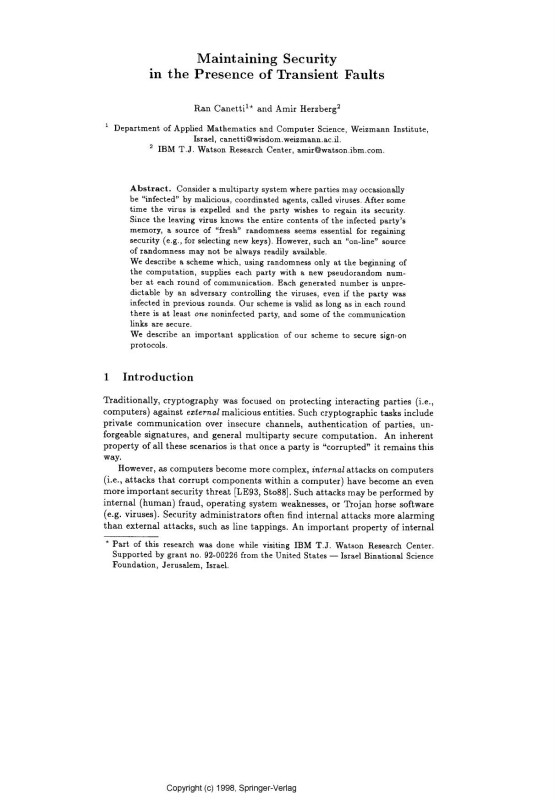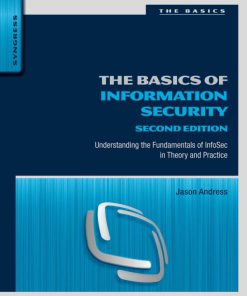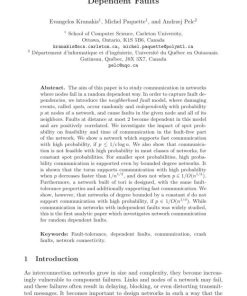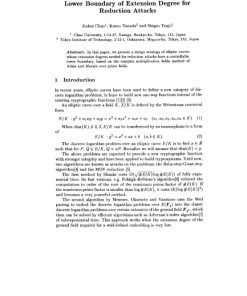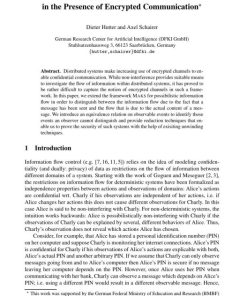Maintaining security in the presence of transient faults 1st edition by Ran Canetti, Amir Herzberg ISBN 3540583332 9783540583332
$50.00 Original price was: $50.00.$25.00Current price is: $25.00.
Authors:Canetti, R.; Herzberg, A. , Tags:Advances in Cryptology – Crypto ’94; Lecture Notes in Computer Science Volume 839; multi-party computation , Author sort:Canetti, R. & Herzberg, A. , Languages:Languages:eng
Maintaining security in the presence of transient faults 1st edition by Ran Canetti, Amir Herzberg – Ebook PDF Instant Download/Delivery. 3540583332, 978-3540583332
Full download Maintaining security in the presence of transient faults 1st Edition after payment
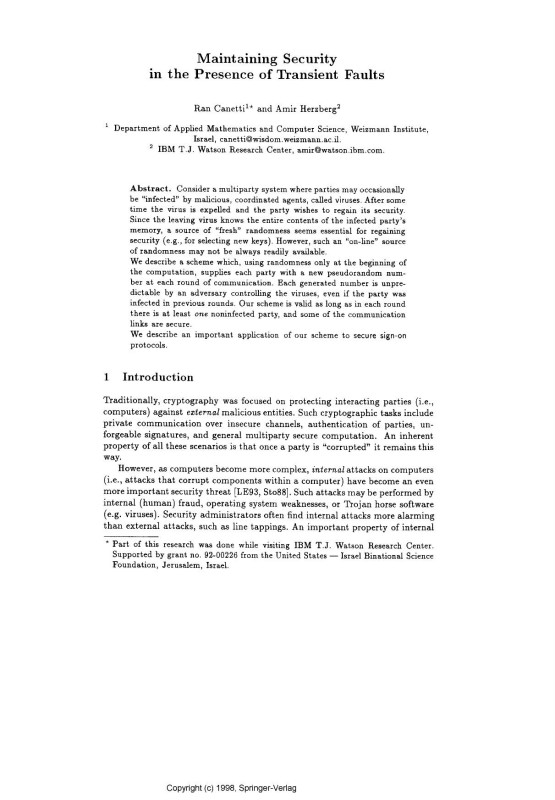
Product details:
ISBN 10: 3540583332
ISBN 13: 978-3540583332
Author: Ran Canetti, Amir Herzberg
Consider a multiparty system where parties may occasionally be “infected” by malicious, coordinated agents, called viruses. After some time the virus is expelled and the party wishes to regain its security. Since the leaving virus knows the entire contents of the infected party’s memory, a source of “fresh” randomness seems essential for regaining security (e.g., for selecting new keys). However, such an “on-line” source of randomness may not be always readily available.
We describe a scheme which, using randomness only at the beginning of the computation, supplies each party with a new pseudorandom number at each round of communication. Each generated number is unpredictable by an adversary controlling the viruses, even if the party was infected in previous rounds. Our scheme is valid as long as in each round there is at least one noninfected party, and some of the communication links are secure.
We describe an important application of our scheme to secure sign-on protocols.
Maintaining security in the presence of transient faults 1st Table of contents:
-
Introduction
- Overview of Security and Faults
- Motivation for Studying Transient Faults
- Importance of Robust Security Systems
- Structure of the Book
-
Fundamentals of Security and Faults
- Basic Principles of Security in Computing
- Types of Faults: Permanent vs. Transient
- Sources and Causes of Transient Faults
- Consequences of Transient Faults on Security
-
Fault-Tolerant Systems and Techniques
- Overview of Fault Tolerance in Computing Systems
- Redundancy and Error Detection Methods
- Techniques for Mitigating Transient Faults
- Impact on System Performance and Security
-
Threat Models in the Presence of Transient Faults
- Identifying Potential Security Threats
- Fault-Induced Vulnerabilities and Attack Vectors
- Transient Faults as a Threat to Cryptographic Systems
- Case Studies of Real-World Security Breaches
-
Cryptography and Transient Faults
- The Role of Cryptography in Security
- How Transient Faults Affect Cryptographic Algorithms
- Countermeasures for Securing Cryptographic Operations
- Fault Injection Attacks and Protection Mechanisms
-
Secure System Design under Fault Conditions
- Designing Resilient Systems against Transient Faults
- Security Architecture and Fault-Tolerant Protocols
- Redundancy and Error Detection in Security Protocols
- Case Studies in Secure System Design
-
Verification and Validation of Security in Fault-Prone Environments
- Approaches for Verifying Security in Fault-Tolerant Systems
- Testing and Validation of Fault-Tolerant Security Mechanisms
- Tools and Methods for Fault Injection Testing
- Ensuring Reliability and Robustness in Security Systems
-
Case Studies in Transient Fault-Tolerant Security
- Analysis of Fault Tolerance in Existing Secure Systems
- Case Study 1: Secure Communication Protocols
- Case Study 2: Fault-Tolerant Authentication Systems
- Lessons Learned from Real-World Implementations
-
Challenges and Future Directions
- Current Challenges in Maintaining Security under Transient Faults
- Emerging Trends in Fault-Tolerant Security Systems
- Future Research Directions and Opportunities
- Potential Applications in Critical Infrastructure and IoT
-
Conclusions
- Summary of Key Findings
- Best Practices for Security in Fault-Prone Environments
- Final Thoughts on Maintaining Security under Transient Faults
People also search for Maintaining security in the presence of transient faults 1st:
what does it mean to maintain security and order
maintaining your security clearance
as a security precaution you have implemented
the process of maintaining a table listing all established connections
for many years the focus of security was on prevention

